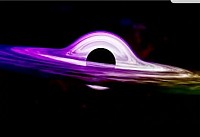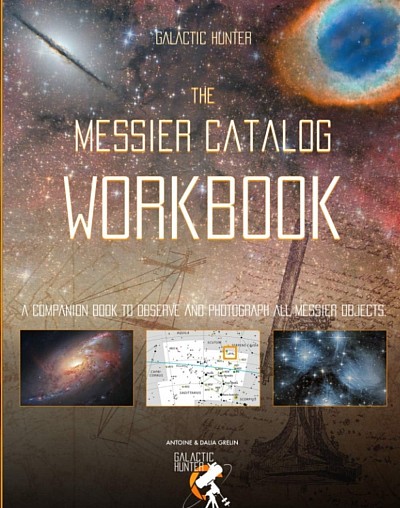Astronomy Stargazing Blogs, Articles and Book Reviews.
My Astronomy Stargazing blogs
Discover all the many aspects of astronomy stargazing as I take you through a selection amazing, astronomy, facts, figures and techniques to get the very best out of your stargazing experience.
My blogs will cover everything from “how to recognise the constellations and navigate the night sky”. To, how to set up your telescope and collimate the mirrors.
I will log some of my personal stargazing experiences and show live videos of me using my telescope.
So don’t forget to come back and visit for more updates on my blog.
Thank you.
Lee Shephard
Exploring the Depths of Astronomy: A Comprehensive Guide
Astronomy is the scientific study of celestial objects, space, and the universe as a whole. It is one of the oldest sciences, with roots tracing back to ancient civilizations that observed the stars and planets to develop calendars and navigation systems. Modern astronomy encompasses a wide range of subfields, from the study of planets and stars to the exploration of galaxies and cosmology.
Historical Overview
Astronomy has a rich history, beginning with early human societies who used the night sky for practical purposes like tracking time and navigation. Ancient cultures, such as the Babylonians, Egyptians, and Greeks, made significant contributions to our understanding of the cosmos. The Greeks, particularly, laid the foundations of Western astronomy, with figures like Ptolemy proposing geocentric models of the universe.
The Copernican Revolution in the 16th century marked a pivotal shift, with Nicolaus Copernicus proposing a heliocentric model, placing the Sun at the center of the solar system. This was further developed by Johannes Kepler, who described the elliptical orbits of planets, and Galileo Galilei, whose telescopic observations supported the heliocentric theory.
Modern Astronomy
Today, astronomy is divided into several branches, each focusing on different aspects of the universe:
1. **Observational Astronomy**: This involves collecting data from celestial objects using telescopes and other instruments. Observational astronomers study everything from the motions of planets to the properties of distant galaxies.
2. **Theoretical Astronomy**: This branch uses mathematical models and simulations to explain astronomical phenomena. Theoretical astronomers work to understand the underlying principles of the universe, such as the behavior of black holes or the dynamics of galaxy formation.
3. **Planetary Science**: Focused on the study of planets, moons, and planetary systems, including those in our own solar system and around other stars.
4. **Stellar Astronomy**: This field examines the properties and life cycles of stars, including their formation, evolution, and eventual fate.
5. **Galactic Astronomy**: Concerned with the study of our Milky Way galaxy, including its structure, composition, and the various objects within it.
6. **Extragalactic Astronomy**: This branch looks beyond our galaxy to study other galaxies and the large-scale structure of the universe.
7. **Cosmology**: A subfield of astronomy that seeks to understand the origin, evolution, and ultimate fate of the universe as a whole. Cosmologists study phenomena like the Big Bang, cosmic microwave background radiation, and dark matter and dark energy.
Tools and Techniques
Modern astronomers use a variety of tools to study the universe. Telescopes, both ground-based and space-based, are the primary instruments. These telescopes can detect a range of electromagnetic radiation, from visible light to radio waves, X-rays, and gamma rays.
Space missions and probes, such as the Hubble Space Telescope and the Mars rovers, have provided unprecedented views of the cosmos and have helped answer fundamental questions about the nature of our solar system and beyond.
In addition to telescopic observations, astronomers use computer simulations and theoretical models to predict and explain astronomical phenomena. Advances in technology have also allowed for the detection of gravitational waves and neutrinos, opening new windows into the study of the universe.
The Importance of Astronomy
Astronomy not only satisfies our curiosity about the universe but also has practical applications. It has led to technological advancements, such as improvements in optics and imaging technologies, and has driven innovation in areas like data analysis and computer science.
Moreover, studying the universe helps us understand our place in it. By exploring the cosmos, we gain insights into the origins of the Earth and life itself. Astronomy also fosters a sense of wonder and inspires future generations to pursue science and technology.
In conclusion, astronomy is a dynamic and ever-evolving field that seeks to unravel the mysteries of the universe. Through the combined efforts of observational and theoretical astronomers, we continue to expand our understanding of the cosmos and our place within it.
Unveiling the Best Astronomy Books: Reviews and Recommendations
Discover Must-Reads for Astronomy Enthusiasts with Our Insightful Reviews
Welcome to our celestial library of astronomy book reviews! Embark on a cosmic journey as we explore the vast universe of literary wonders, guiding you through the pages of insightful works that unravel the mysteries of the cosmos. Whether you're a stargazing enthusiast or a seasoned astronomer, discover the celestial narratives that will expand your understanding of the cosmos and leave you starstruck. Join us on this literary voyage where the stars are the storytellers, and each book is a portal to the wonders of the night sky.
Book 1.
Celestial Workbook: Unraveling the Mysteries of the Night Sky
For Christmas 2022 last year my six year old granddaughter Ivy bought me a fantastic book. It was a book of the 101 celestial objects in the Charles Messier Catalog.
It is called The Messier Catalog Workbook by Galactic Hunter.
In the book it describes how and when to observe Messier’s stellar objects.
There are pages where you can log the time and date and add an image of what you saw under each object.
“The Messier Catalog Workbook” by Galactic Hunter is a comprehensive guide that brings the cosmos closer to amateur astronomers. Galactic Hunter skillfully navigates through Charles Messier’s catalog, providing a workbook that seamlessly blends education with practical application. The book is a valuable resource for both beginners and seasoned stargazers, offering detailed insights into each Messier object and practical exercises to enhance observational skills. With clear instructions and engaging content, Galactic Hunter transforms the pursuit of these celestial wonders into an accessible and rewarding experience. The workbook is a must-have for anyone seeking to deepen their connection with the night sky and expand their astronomical knowledge.
Book2.
Celestial Enlightenment: A Voyage through the Universe with 'Astronomy For Dummies
Stephen P. Maran's book "Astronomy For Dummies" provides an introductory primer to the exciting field of astronomy. This book is a part of the well-known "For Dummies" series, which tackles difficult subjects in an approachable and simple-to-understand manner. I shall emphasise the salient features of the book, its organisation, and the primary subjects it addresses in my synopsis.
Introduction to Astronomy: This section of the book begins by providing the reader with an overview of astronomy, defining its terms and outlining its significance. Maran highlights that everyone can become an amateur astronomer and that you don't need to have a background in science to appreciate and comprehend the universe.
The Night Sky:
Knowing the night sky is one of the core concepts of astronomy. "Astronomy For Dummies" offers instructions on how to find constellations, navigate the night sky, and comprehend how celestial objects move. It presents the idea of the celestial sphere, star charts, and instruments such as planispheres for star and constellation identification.
Tools for Observation:
Maran lists the necessary instruments and supplies that prospective astronomers may need. The book offers readers guidance on selecting the appropriate equipment for their needs and budget, ranging from basic items like binoculars to more sophisticated telescopes.
Stars and Galaxies:
The book explores the properties of stars, such as their sizes, brightness, and life cycles. It also examines galaxies, ranging from the Milky Way to more distant ones. The breadth of the universe and the variety of celestial bodies that inhabit it will become clearer to readers.
The Solar System:
Our own solar system receives a good deal of attention in this book. It encompasses comets, asteroids, planets, moons, and the sun. Maran goes into great detail about every planet, describing its characteristics, orbit, and physical attributes. The Hubble Space Telescope and its contributions to our understanding of the universe are just one example of the celestial objects whose historical significance is also covered in the book.
Life Beyond Earth:
The hunt for extraterrestrial life is one of astronomy's most fascinating subjects. Maran talks about the several approaches and initiatives being used to look for evidence of extraterrestrial life, such as the investigation of exoplanets and the hunt for microorganisms on Mars. The author discusses the intriguing advancements in astrobiology and the possibility of finding extraterrestrial life.
Cosmic riddles and Theories: Readers will learn about a few of the astronomical riddles and theories in this book. This covers the expanding cosmos, the nature of dark matter and dark energy, and the idea of black holes. Beginners can understand these difficult subjects since Maran makes them simple to understand.
Observing the Night Sky:
“Astronomy For Dummies” provides practical advice on how to observe the night sky effectively. It covers topics like light pollution, finding the best observing locations, and understanding the different types of celestial events, such as eclipses, meteor showers, and planetary conjunction
Resources & More Learning: Maran provides suggestions for further reading and references throughout the text. This covers books, software, and websites that can assist readers in advancing their astronomy education. The significance of keeping abreast of the most recent advancements in science and technology is emphasised by the author.
CONCLUSION:
In summary, Stephen P. Maran's "Astronomy For Dummies" is a great resource for anyone interested in learning more about the wonders of the cosmos. It gives newcomers a strong foundation in astronomy and makes difficult ideas approachable and entertaining. The book inspires readers to go on their own stargazing expeditions and covers a wide range of subjects, from comprehending the night sky to delving into the mysteries of the cosmos.
Even if it doesn't cover everything in the book, this synopsis should give you a decent idea of what "Astronomy For Dummies" is all about. This book is a fantastic place to start if you're interested in astronomy and want to get started in the field.






